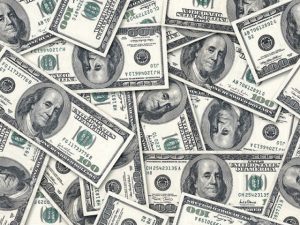 The American economy grew more than expected in the first quarter of the year. According to the Commerce Department, the economy grew at an annual rate of 2.3 percent in the first three months of 2018. Wall Street analysts’ had forecast a 2 percent growth rate.
The American economy grew more than expected in the first quarter of the year. According to the Commerce Department, the economy grew at an annual rate of 2.3 percent in the first three months of 2018. Wall Street analysts’ had forecast a 2 percent growth rate.
The results represented an expected slowing from the fourth quarter’s 2.9 percent growth rate. First-quarter GDP tends to be sluggish because of a seasonal quirk. Since the economy began its expansion nearly nine years ago, first-quarter economic growth has averaged 1.2 percent.
The Commerce Department report showed business investment rose more than 6 percent. However, the increase was offset by declines in consumer spending. Consumer spending, which accounts for more than two-thirds of the economy, was its weakest in nearly five years with a 1.1 percent gain. In the last quarter of 2017, spending grew a robust 4 percent.
Another factor weighing on the economy was volatile food and energy costs, which rose 2.5 percent in the quarter. That was the fastest pace since 2011. The Fed wants to keep price increases to about 2 percent annually.
One bright spot was the unemployment rate, pegged at 4.1 percent for the quarter. That is close to what economists consider full employment. First-time claims for unemployment insurance fell to 209,000, the lowest level since 1969.
Economists believe the combination of tax cuts and a tight labor market should boost spending in the coming months. The Fed is now predicting the economy will grow at an annual rate of 2.7 percent this year. In December, the prediction was for growth of 2.5 percent.
Federal Reserve Chairman Jerome Powell doesn’t want the economy growing so fast that it sparks steadily increasing prices. In March, the Fed raised short-term interest rates for the sixth time since 2015. The central bank recently forecast at least two rate hikes this year.
